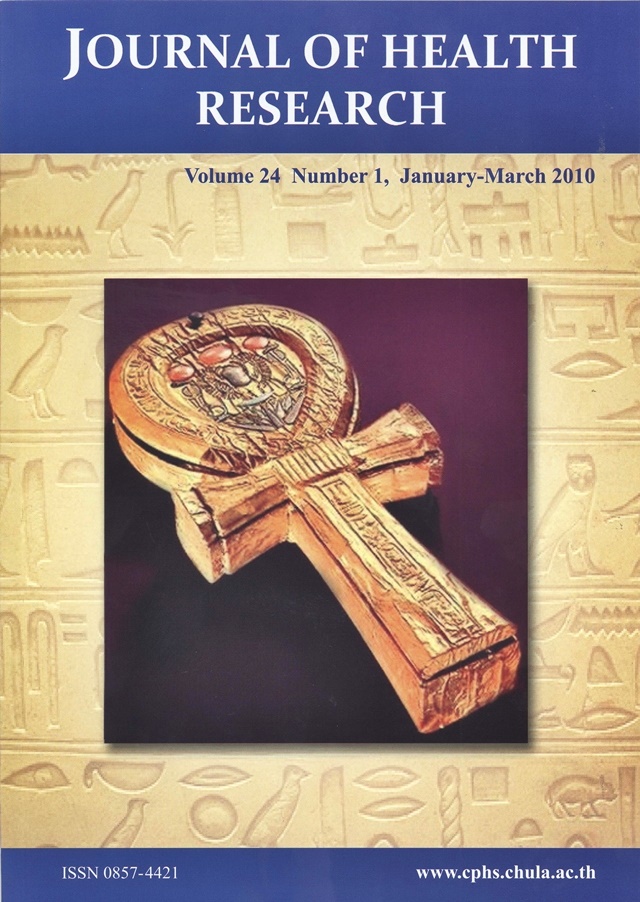Development of Peacock Flower Extract as Anti-Wrinkle Formulation
Keywords:
Peacock flower extract, Antioxidant, Antiwrinkle, Gallic acid, ElasticityAbstract
The main objective of this study was to evaluate the antioxidant property of the ethanolic extract from the petals of Caesalpinia pulcherrima, and to develop an anti-wrinkle product from the crude extract including the quality assessment. The DPPH radical scavenging and ABTS cation radical scavenging assay were used to evaluate the anti-oxidant properties. The results of DPPH radical scavenging assay showed the strongest activity (IC50= 34.74 μg/ml) of the crude extract from the red petals of C. pulcherrima, followed by the extract of the orange petals (IC50=35.63 μg/ml) and the yellow petals (IC50=102.27 μg/ml), respectively. The ABTS cation radical scavenging assay demonstrated the strongest activity (IC50=227.66 μg/ml) for the orange petals followed by the red petals (IC50=243.01 μg/ml) and the yellow petals (IC50=338.72 μg/ml). Consequently, orange petals were chosen in order to develop an anti-wrinkle product in an O/W formula (oil in water cream). Quality evaluation of the anti-wrinkle product was assessed by using heating–cooling cycle’s method. No change of the physical properties was observed; the pH was in a proper range (approximately pH7). The quantity of gallic acid as marker of the crude extract and the product was analyzed by HPLC. The amount of gallic acid in crude extract and finished product was 1.26 and 1.87 μg/ml, respectively. Finally, 21 volunteers participated in the clinical study for a period of one month in order to test the product’s safety and efficacy. The results demonstrated that the anti-wrinkle product had the efficacy of enhancing the elasticity of the skin. No irritation could be observed at the volunteer’s skin.







